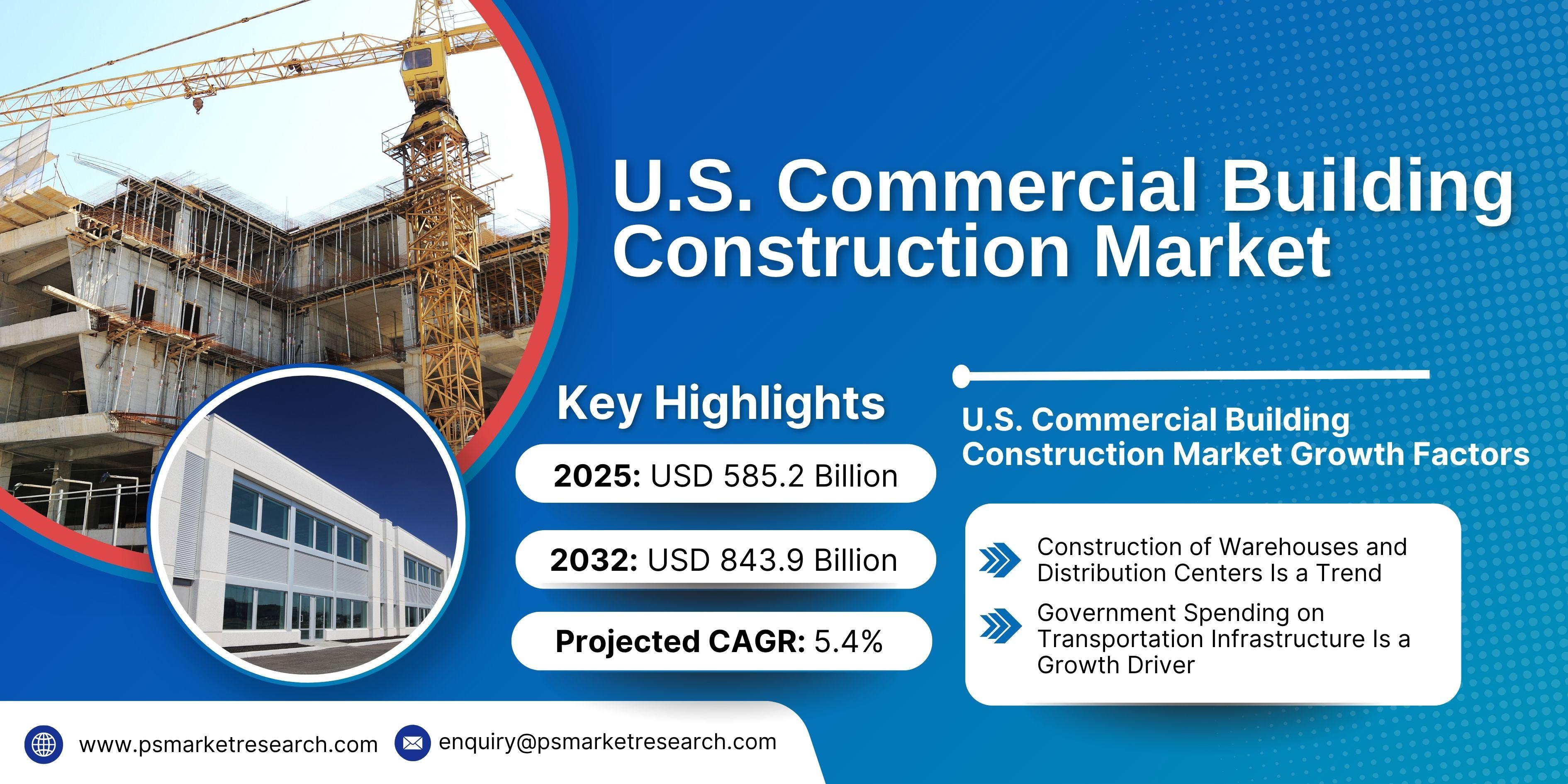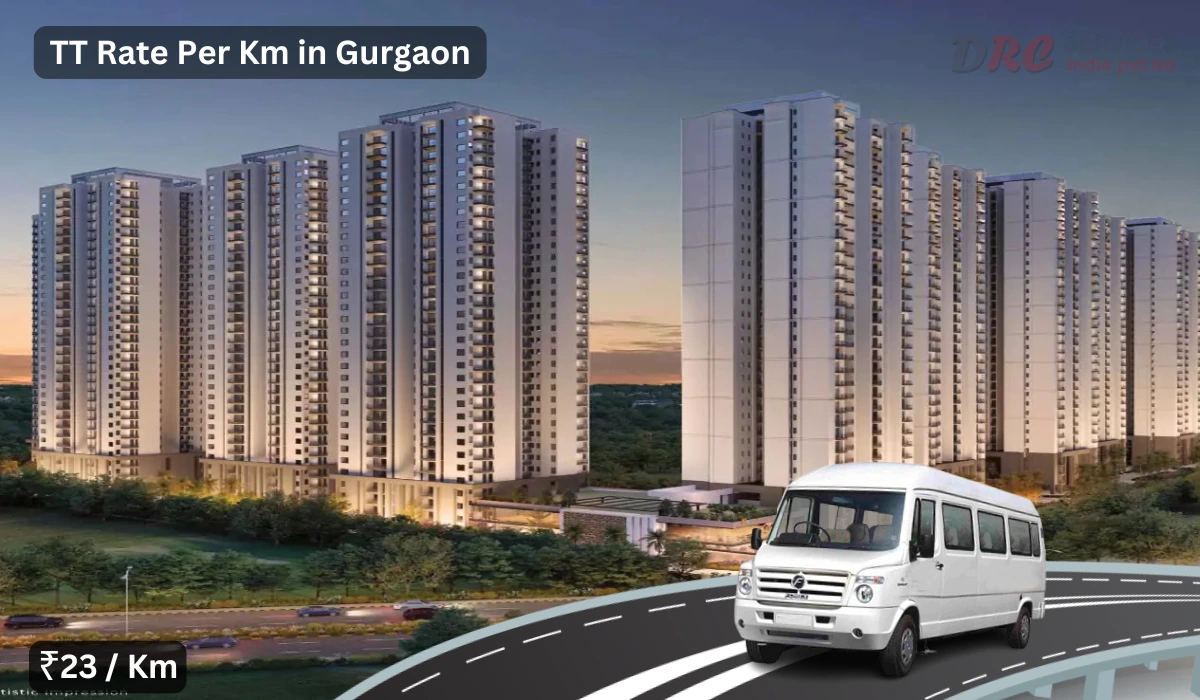U.S. Commercial Building Construction Market : Trends, Growth, and Future Outlook
The U.S. commercial building construction market generated approximately USD 560.8 billion in 2024, and is forecast to reach USD 843.9 billion by 2032, expanding at a 5.4% CAGR during 2025–2032. This robust growth reflects recovering economic activity and sustained investment across multiple commercial segments.
Growth Drivers & Industry Catalysts
• Recovery in office, retail, hospitality and logistics sectors: Post pandemic office reoccupancy, rising demand for experiential shopping centers, and hospitality redevelopment are fueling fresh construction needs. Warehouse and data centers are also seeing significant investment.
• Population growth and urbanization: Expanding cities in the South and West—particularly Texas, Florida, and Arizona—are spurring demand for commercial infrastructure.
• Modernization trends: Companies are investing in modern, sustainable, and tech-enabled workspaces tailored to hybrid work models and modern retail formats.
Market Segmentation Insights
• Building types covered in the market include office buildings, retail spaces, hotels/resorts, healthcare facilities, warehouses & logistics centers, educational institutions, and public/government infrastructure.
• Project scopes include new construction, tenant-improvements, and renovation/remodeling—reflecting a broad investment portfolio across owners and operators.
Regional Dynamics
• The South region leads in market share in 2024, thanks to lower land costs and development-friendly regulations.
• The West region is the fastest-growing, spurred by strong investment in logistics infrastructure and relocation of tech and corporate campuses.
Market Structure & Funding
• The market remains highly fragmented, with both large contractors and regional specialists participating in niche segments.
• Although private developers account for ~85% of total activity, public sector investments—particularly via federal infrastructure acts—support expansion in transit, healthcare, and public facilities through PCP and bond programs.
Trends & Strategic Opportunities
New Construction & Renovation Balance
• New builds made up approximately 67% of total 2024 spending, especially in retail and logistics.
• Meanwhile, renovation and adaptive reuse is rising rapidly, helping reduce timelines and cost while aligning with sustainability goals.
Sector Expansion Drivers
• Warehouse & logistics projects remain the fastest-growing segment due to continued e commerce demand and near-shoring trends.
• Office space remains largest by share (~34%), even as hybrid work dynamics reshape corporate real estate strategies.
Adoption of Smart & Green Practices
• Rising integration of smart building technologies, LEED-certified design, and energy-efficient systems is shaping modern commercial builds.
• The shift toward modular and prefabricated construction is gaining traction, especially for workspace retrofits and scalable retail deployments.
Industry Challenges
• Rising material and labor costs remain a key concern, squeezing margins and pressuring project timelines.
• Regulatory and environmental compliance—including permits, zoning approvals, and sustainability standards—can delay projects and increase complexity.
• Skilled labor shortages continue to limit capacity for complex commercial projects.
Strategic Recommendations
• For Developers: Diversify portfolios across sectors—office, logistics, hospitality—and emphasize flexible leases and adaptive space solutions.
• For Contractors: Build capabilities around modular construction, off-site prefabrication, and retrofit technology to stay competitive.
• For Service Providers: Align with sustainability mandates and integrate smart systems, energy saving, and data analytics into construction offers.
Market Snapshot
Metric Value
2024 Market Size USD 560.8 billion
2032 Forecast USD 843.9 billion
CAGR (2025–2032) 5.4%
Largest Region South
Fastest Growing Region West
Leading Building Type Office (~34% share)
Fastest Growing Segment Industrial & Logistics
Structure & Funding Fragmented; ~85% Private
Construction Balance ~67% New, growing renovation shares
Outlook Through 2032
The U.S. commercial building construction market is poised for steady growth, buoyed by renewed economic activity, urban expansion, and rising tenant expectations for smart, sustainable spaces. Markets in the South and West will lead demand, especially in sectors like logistics and hospitality.
As office activity rebounds with premium, adaptive spaces, and retail evolves toward experiential destinations, the outlook favors those companies equipped with modern building systems, modular capabilities, and strategic regional alignment.
#https://www.psmarketresearch.com/market-analysis/us-commercial-building-construction-market-report
The U.S. commercial building construction market generated approximately USD 560.8 billion in 2024, and is forecast to reach USD 843.9 billion by 2032, expanding at a 5.4% CAGR during 2025–2032. This robust growth reflects recovering economic activity and sustained investment across multiple commercial segments.
Growth Drivers & Industry Catalysts
• Recovery in office, retail, hospitality and logistics sectors: Post pandemic office reoccupancy, rising demand for experiential shopping centers, and hospitality redevelopment are fueling fresh construction needs. Warehouse and data centers are also seeing significant investment.
• Population growth and urbanization: Expanding cities in the South and West—particularly Texas, Florida, and Arizona—are spurring demand for commercial infrastructure.
• Modernization trends: Companies are investing in modern, sustainable, and tech-enabled workspaces tailored to hybrid work models and modern retail formats.
Market Segmentation Insights
• Building types covered in the market include office buildings, retail spaces, hotels/resorts, healthcare facilities, warehouses & logistics centers, educational institutions, and public/government infrastructure.
• Project scopes include new construction, tenant-improvements, and renovation/remodeling—reflecting a broad investment portfolio across owners and operators.
Regional Dynamics
• The South region leads in market share in 2024, thanks to lower land costs and development-friendly regulations.
• The West region is the fastest-growing, spurred by strong investment in logistics infrastructure and relocation of tech and corporate campuses.
Market Structure & Funding
• The market remains highly fragmented, with both large contractors and regional specialists participating in niche segments.
• Although private developers account for ~85% of total activity, public sector investments—particularly via federal infrastructure acts—support expansion in transit, healthcare, and public facilities through PCP and bond programs.
Trends & Strategic Opportunities
New Construction & Renovation Balance
• New builds made up approximately 67% of total 2024 spending, especially in retail and logistics.
• Meanwhile, renovation and adaptive reuse is rising rapidly, helping reduce timelines and cost while aligning with sustainability goals.
Sector Expansion Drivers
• Warehouse & logistics projects remain the fastest-growing segment due to continued e commerce demand and near-shoring trends.
• Office space remains largest by share (~34%), even as hybrid work dynamics reshape corporate real estate strategies.
Adoption of Smart & Green Practices
• Rising integration of smart building technologies, LEED-certified design, and energy-efficient systems is shaping modern commercial builds.
• The shift toward modular and prefabricated construction is gaining traction, especially for workspace retrofits and scalable retail deployments.
Industry Challenges
• Rising material and labor costs remain a key concern, squeezing margins and pressuring project timelines.
• Regulatory and environmental compliance—including permits, zoning approvals, and sustainability standards—can delay projects and increase complexity.
• Skilled labor shortages continue to limit capacity for complex commercial projects.
Strategic Recommendations
• For Developers: Diversify portfolios across sectors—office, logistics, hospitality—and emphasize flexible leases and adaptive space solutions.
• For Contractors: Build capabilities around modular construction, off-site prefabrication, and retrofit technology to stay competitive.
• For Service Providers: Align with sustainability mandates and integrate smart systems, energy saving, and data analytics into construction offers.
Market Snapshot
Metric Value
2024 Market Size USD 560.8 billion
2032 Forecast USD 843.9 billion
CAGR (2025–2032) 5.4%
Largest Region South
Fastest Growing Region West
Leading Building Type Office (~34% share)
Fastest Growing Segment Industrial & Logistics
Structure & Funding Fragmented; ~85% Private
Construction Balance ~67% New, growing renovation shares
Outlook Through 2032
The U.S. commercial building construction market is poised for steady growth, buoyed by renewed economic activity, urban expansion, and rising tenant expectations for smart, sustainable spaces. Markets in the South and West will lead demand, especially in sectors like logistics and hospitality.
As office activity rebounds with premium, adaptive spaces, and retail evolves toward experiential destinations, the outlook favors those companies equipped with modern building systems, modular capabilities, and strategic regional alignment.
#https://www.psmarketresearch.com/market-analysis/us-commercial-building-construction-market-report
U.S. Commercial Building Construction Market : Trends, Growth, and Future Outlook
The U.S. commercial building construction market generated approximately USD 560.8 billion in 2024, and is forecast to reach USD 843.9 billion by 2032, expanding at a 5.4% CAGR during 2025–2032. This robust growth reflects recovering economic activity and sustained investment across multiple commercial segments.
Growth Drivers & Industry Catalysts
• Recovery in office, retail, hospitality and logistics sectors: Post pandemic office reoccupancy, rising demand for experiential shopping centers, and hospitality redevelopment are fueling fresh construction needs. Warehouse and data centers are also seeing significant investment.
• Population growth and urbanization: Expanding cities in the South and West—particularly Texas, Florida, and Arizona—are spurring demand for commercial infrastructure.
• Modernization trends: Companies are investing in modern, sustainable, and tech-enabled workspaces tailored to hybrid work models and modern retail formats.
Market Segmentation Insights
• Building types covered in the market include office buildings, retail spaces, hotels/resorts, healthcare facilities, warehouses & logistics centers, educational institutions, and public/government infrastructure.
• Project scopes include new construction, tenant-improvements, and renovation/remodeling—reflecting a broad investment portfolio across owners and operators.
Regional Dynamics
• The South region leads in market share in 2024, thanks to lower land costs and development-friendly regulations.
• The West region is the fastest-growing, spurred by strong investment in logistics infrastructure and relocation of tech and corporate campuses.
Market Structure & Funding
• The market remains highly fragmented, with both large contractors and regional specialists participating in niche segments.
• Although private developers account for ~85% of total activity, public sector investments—particularly via federal infrastructure acts—support expansion in transit, healthcare, and public facilities through PCP and bond programs.
Trends & Strategic Opportunities
New Construction & Renovation Balance
• New builds made up approximately 67% of total 2024 spending, especially in retail and logistics.
• Meanwhile, renovation and adaptive reuse is rising rapidly, helping reduce timelines and cost while aligning with sustainability goals.
Sector Expansion Drivers
• Warehouse & logistics projects remain the fastest-growing segment due to continued e commerce demand and near-shoring trends.
• Office space remains largest by share (~34%), even as hybrid work dynamics reshape corporate real estate strategies.
Adoption of Smart & Green Practices
• Rising integration of smart building technologies, LEED-certified design, and energy-efficient systems is shaping modern commercial builds.
• The shift toward modular and prefabricated construction is gaining traction, especially for workspace retrofits and scalable retail deployments.
Industry Challenges
• Rising material and labor costs remain a key concern, squeezing margins and pressuring project timelines.
• Regulatory and environmental compliance—including permits, zoning approvals, and sustainability standards—can delay projects and increase complexity.
• Skilled labor shortages continue to limit capacity for complex commercial projects.
Strategic Recommendations
• For Developers: Diversify portfolios across sectors—office, logistics, hospitality—and emphasize flexible leases and adaptive space solutions.
• For Contractors: Build capabilities around modular construction, off-site prefabrication, and retrofit technology to stay competitive.
• For Service Providers: Align with sustainability mandates and integrate smart systems, energy saving, and data analytics into construction offers.
Market Snapshot
Metric Value
2024 Market Size USD 560.8 billion
2032 Forecast USD 843.9 billion
CAGR (2025–2032) 5.4%
Largest Region South
Fastest Growing Region West
Leading Building Type Office (~34% share)
Fastest Growing Segment Industrial & Logistics
Structure & Funding Fragmented; ~85% Private
Construction Balance ~67% New, growing renovation shares
Outlook Through 2032
The U.S. commercial building construction market is poised for steady growth, buoyed by renewed economic activity, urban expansion, and rising tenant expectations for smart, sustainable spaces. Markets in the South and West will lead demand, especially in sectors like logistics and hospitality.
As office activity rebounds with premium, adaptive spaces, and retail evolves toward experiential destinations, the outlook favors those companies equipped with modern building systems, modular capabilities, and strategic regional alignment.
#https://www.psmarketresearch.com/market-analysis/us-commercial-building-construction-market-report
0 Comments
0 Shares
15 Views
0 Reviews











